ROCK2
-
Official Full Name
Rho-associated, coiled-coil containing protein kinase 2 -
Overview
The protein encoded by this gene is a serine/threonine kinase that regulates cytokinesis, smooth muscle contraction, the formation of actin stress fibers and focal adhesions, and the activation of the c-fos serum response element. This protein, which is an isozyme of ROCK1 is a target for the small GTPase Rho. [provided by RefSeq, Jul 2008] -
Synonyms
ROCK2;Rho-associated, coiled-coil containing protein kinase 2;ROCK-II;rho-associated protein kinase 2;p164 ROCK-2;rho-associated, coiled-coil-containing protein kinase II
Recombinant Proteins
- Human
- Rhesus macaque
- Mouse
- Rat
- Insect Cells
- E.coli
- Mammalian Cells
- Sf9 Cells
- HEK293
- Insect cells
- GST
- His
- T7
- Non
- DDK
- Myc
- Avi
- Fc
- Flag
Background
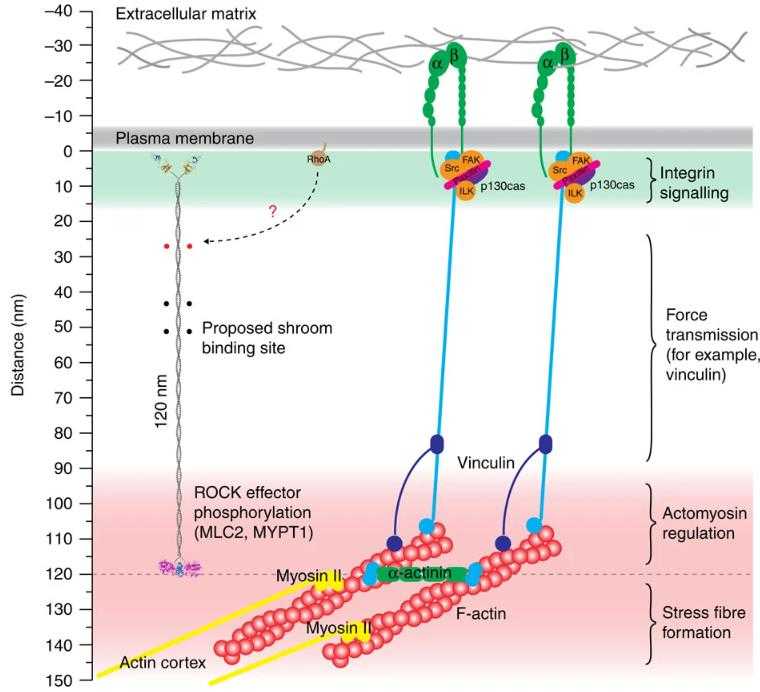
Fig1. A molecular ruler governs ROCK access to substrates. (Linda Truebestein, 2015)
What is ROCK2 Protein?
ROCK2, or RHO-associated coiled coil kinase 2, is a big player in the Rho kinase family. It helps regulate how cells look, move, survive, and even how they die. This protein, with its 1388 amino acids, has several key parts: a kinase domain, an Rho binding area, and a PH domain. ROCK2 gets involved by promoting the force that lets muscles contract by phosphorylating proteins like myosin light chain and LIM kinase. It can control the cell's skeleton, too. Normally, it keeps itself in check, but it can be activated when certain things happen, like GTP binding or cutting part of the RhoA. You'll find ROCK2 in both the cell's main area and its nucleus, and it's linked to various brain diseases. Because of this, it's seen as a potential treatment target for conditions like cerebral ischemia, high blood pressure, and diabetic heart issues.
What is the Function of ROCK2 Protein?
ROCK2 protein is like a multitasking manager in the cell. It's part of the Rho kinase family and plays a big role in how cells look, move, survive, and even how they handle their internal traffic and skeleton structure. With its 1388 amino acids, ROCK2 has different parts that help it connect and interact, like a kinase domain and a Rho-binding domain. It helps generate force in cells by working on proteins such as myosin light chain (MLC) and LIM kinase, which are crucial for cell movement and shape. Usually, ROCK2 keeps itself in check but can be switched on by certain triggers. You can find it in the cell's cytoplasm and nucleus, and it's linked to a bunch of diseases, including neurodegenerative ones. It's even being looked at for treating things like strokes, high blood pressure, and heart-related issues.
ROCK2 Related Signaling Pathway
The ROCK2 protein is a big player in the Rho kinase family, mainly dealing with how cells look, move, survive, and handle stress. It's got 1388 amino acids and features like a kinase domain, Rho binding, and a PH domain. ROCK2 helps cells generate contractile force by acting on proteins like myosin light chain and LIM kinase, affecting the cell's skeleton. Usually, it's self-regulating but revs up with GTP binding or when part of it gets chopped off. You'll find ROCK2 both in the cell's gooey interior and its control center, the nucleus. It's linked to a bunch of nasty neurodegenerative diseases, and targeting it could help treat issues like cerebral ischemia, high blood pressure, and diabetic heart trouble.
ROCK2 Related Diseases
ROCK2 is a protein that's part of the Rho kinase family, playing a significant role in cell shape and movement, survival, and the skeleton's structure. It can impact neurodegenerative diseases and is seen as a potential target for treating conditions like stroke, high blood pressure, and diabetic heart issues. Basically, ROCK2 is a bit of a cell architect, helping to build and maintain cell structure by influencing how parts of the cell's skeleton contract. It gets activated in the cell's cytoplasm and nucleus and does its job by interacting with other proteins.
Bioapplications of ROCK2
The application of recombinant ROCK2 protein in research and industrial production mainly revolves around its role in understanding cell behavior and developing medical therapies. In scientific research, ROCK2 aids in studying cell movement, shape, and survival, which offers insights into various cellular processes and diseases. This understanding enables researchers to design targeted treatments for conditions like neurodegenerative diseases and certain cardiovascular issues where ROCK2 plays a part. In the industrial context, manipulating ROCK2 pathways can potentially improve biotechnological processes, such as tissue engineering and regenerative medicine, where controlling cell growth and differentiation is crucial. However, while the applications are promising, much of the usage of ROCK2 protein is still in experimental stages, and ongoing studies aim to establish more robust methods and clear therapeutic strategies for broader application.
Case Study
Case Study 1: J C Koch, 2014
The Rho/ROCK/LIMK pathway is key for handling repulsive signals in the central nervous system. Studies have shown that ROCK inhibitors can help neurite regrowth and support neuron survival, but it's unclear if ROCK is the main target. To figure this out, we used viral vectors to specifically reduce ROCK2 and LIMK1 in rat retinal ganglion cells both in lab settings and live animals. Our findings show that reducing either ROCK2 or LIMK1 boosts neurite growth on challenging surfaces and promotes significant nerve regeneration after optic nerve injury in rats. Interestingly, only targeting ROCK2 improved neuron survival after injury and reduced further axon damage, as seen through live imaging. We found that lowering ROCK2 levels decreased certain damaging enzyme activities and increased some protective proteins, pointing to its role in improving neuron resilience.
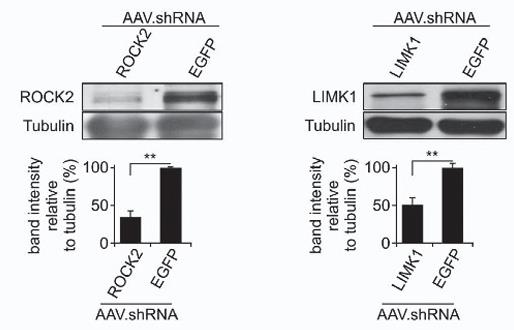
Fig1. Immunoblots for ROCK2 and LIMK1 of primary RGCs transduced with AAV.
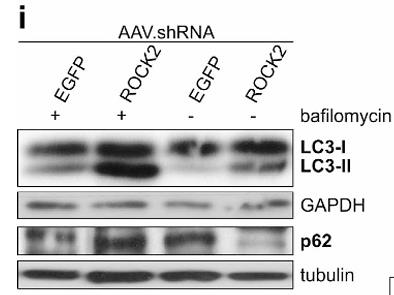
Fig2. ROCK2-shRNA increased LC3-II levels by more than two-fold compared with EGFP-shRNA, whereas p62-levels were decreased.
Case Study 2: Linda Truebestein, 2015
ROCK2 is a key player in controlling the actin cytoskeleton, but until now, we didn't fully understand its structure or how its activity is regulated. Using electron microscopy, we've figured out that ROCK2 is always found in pairs and is about 120 nm long. It has a long coiled section connecting its parts. Contrary to what we thought before, ROCK2 activity isn't directly controlled by binding to membranes, RhoA, or being phosphorylated. Instead, tweaking the length of this coiled section changes ROCK2's behavior in cells. This suggests it acts like a molecular ruler, influencing specific areas of the actin cytoskeleton, based on its length.
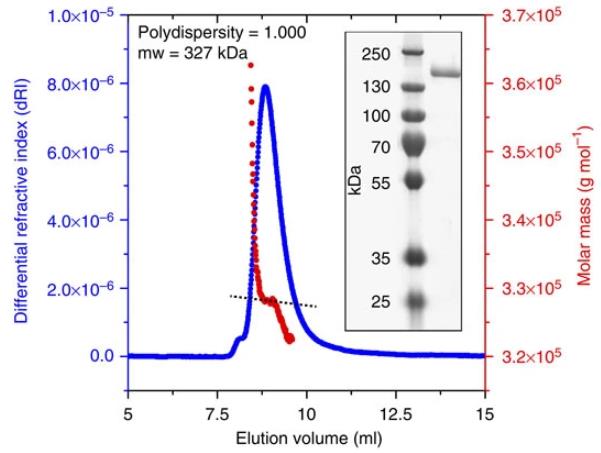
Fig3. Static light-scattering analysis of recombinant ROCK2.
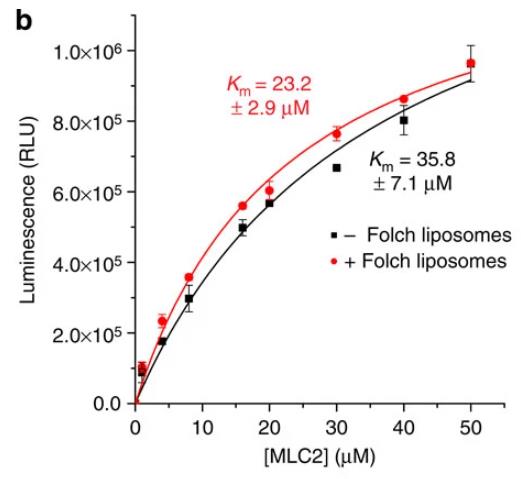
Fig4. Recombinant ROCK2 is active against the substrate MLC2 (black curve), but activity is not influenced by membrane binding (red curve).
Quality Guarantee
High Purity
.jpg)
Fig1. SDS-PAGE (ROCK2-26H)
.
.jpg)
Fig2. SDS-PAGE (ROCK2-1878H)
Involved Pathway
ROCK2 involved in several pathways and played different roles in them. We selected most pathways ROCK2 participated on our site, such as cGMP-PKG signaling pathway,cAMP signaling pathway,Chemokine signaling pathway, which may be useful for your reference. Also, other proteins which involved in the same pathway with ROCK2 were listed below. Creative BioMart supplied nearly all the proteins listed, you can search them on our site.
| Pathway Name | Pathway Related Protein |
|---|---|
| Sphingolipid signaling pathway | GNAI1,PPP2CA,SGPP1,ASAH2,TNFRSF1A,LASS5,PIK3R3,PPP2R1A,GNAQ,DEGS2 |
| Proteoglycans in cancer | Fasl,BRAF,DDX5,PLAUR,PIK3R1,WNT8B,HSPB2,PTK2,WNT5A,ANK2 |
| Focal adhesion | FYNB,ROCK1,FYNA,PIK3CD,PPP1R12A,COL6A2,COL11A2,ITGA2,MYLK,COL2A1A |
| Salmonella infection | FLNC,TLR5B,NFKB1,MAPK14B,MAPK10,IL8L1,LBP,NOS2A,CCL4,KLC2 |
| Wnt signaling pathway | FZD2,DVL1B,CACYBP,TLE3A,SFRP4,CCND1,VANGL2,WNT7A,WNT16,WNT4A |
| Vascular smooth muscle contraction | PRKCE,MAPK3,PLCB1,ACTG2,BRAF,PLA2G4A,PPP1CA,PRKCHA,CALM2B,CALM2 |
| Chemokine signaling pathway | GRK5,CCL27,RHOA,GM13306,HCK,CCL4L1,MAP2K1,CCL21,GM2506,Adcy4 |
| Oxytocin signaling pathway | CALM2,CAMK4,CACNA2D3,CACNG8,PLCB2,PIK3CA,CACNG6,CACNB3,CAMK2A,CACNB4 |
| Leukocyte transendothelial migration | PRKCA,ACTN2,MYL2,MAPK13,ACTN3,ARHGAP35,RASSF5,THY1,PIK3R5,CLDN5 |
Protein Function
ROCK2 has several biochemical functions, for example, ATP binding,Rho GTPase binding,Rho-dependent protein serine/threonine kinase activity. Some of the functions are cooperated with other proteins, some of the functions could acted by ROCK2 itself. We selected most functions ROCK2 had, and list some proteins which have the same functions with ROCK2. You can find most of the proteins on our site.
| Function | Related Protein |
|---|---|
| structural molecule activity | LAMB2,KRTAP3-3,KRT81,LOR,CLTCA,GNL1,KRT83,CLDN11A,CLDN6,ISCA2 |
| metal ion binding | ZFP641,ZNF773,ZBTB18,Atp8a2,ZFP11,ZNF76,ZFP513,SMYD3,PEG3,PON2 |
| Rho GTPase binding | FMNL2,ANTXR2A,DAAM1,AKAP13,ECT2,CDC42BPB,DIAP1,ROCK2B,DAPK3,DOCK11 |
| ATP binding | BCKDK,KIF20B,INSRR,UBE2KA,IGF1R,CSNK1G2,RAD51L3,MYO6A,MAP2K5,NUAK1 |
| poly(A) RNA binding | HIST1H1C,PTRF,RPL35,SF3A2,RPS17L,TOP1,RPL13A,RPL29,UNK,TRIP6 |
| protein serine/threonine kinase activity | STK36,CAMK2B1,NEK11,STK24,TRIOA,CSNK1A1L,PRKD2,CAMK2G1,PRKY,BRAF |
| protein binding | ZBTB33,EPB49,IFI35,NUP155,MAPKBP1,FHL5,MRAS,SIVA1,HP1BP3,PEX16 |
Interacting Protein
ROCK2 has direct interactions with proteins and molecules. Those interactions were detected by several methods such as yeast two hybrid, co-IP, pull-down and so on. We selected proteins and molecules interacted with ROCK2 here. Most of them are supplied by our site. Hope this information will be useful for your research of ROCK2.
NFKBIA;PPP1R14B;15777285;STK16;NCL;IKBKE;purvalanol b;STAU1;Rock1;SNW1;FLOT2;N;CDC5L
ROCK2 Related Signal Pathway
Resources
Research Area
Apoptosis Intracellular KinasesNogo Proteins and Receptors
Repulsive Guidance Molecules and Receptors
Wnt Intracellular Signaling
Intracellular Signaling Molecules in Angiogenesis
Actin Cytoskeleton and Stress Fiber Molecules
Related Services
Related Products
References
- Gerarduzzi, C; He, QW; et al. Prostaglandin E-2-Dependent Blockade of Actomyosin and Stress Fibre Formation Is Mediated Through S1379 Phosphorylation of ROCK2. JOURNAL OF CELLULAR BIOCHEMISTRY 115:1516-1527(2014).
- Huang, P; Wang, J; et al. The effects of erythropoietin on RhoA/Rho-associated kinase expression in rat retinal explants cultured with glutamate. MOLECULAR MEDICINE REPORTS 6:662-666(2012).




